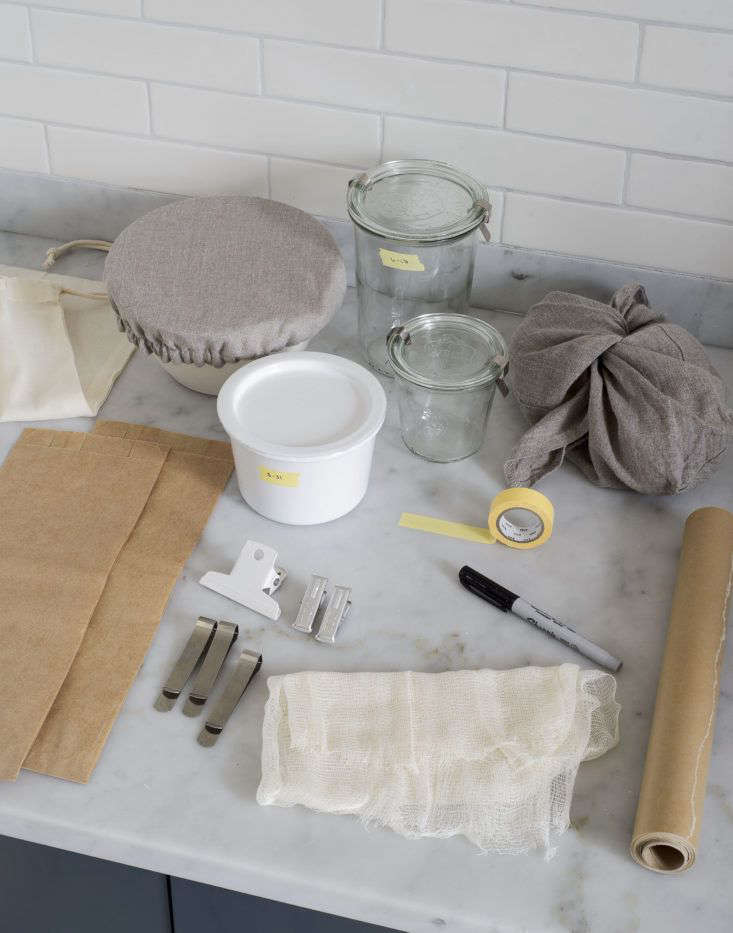
Decanting is life-changing. For a relatively low investment (think Ikea jars or reused glass containers), you can make a big impact in your cupboards by decanting grains into neatly stacked jars. Here’s how—in eight easy steps.
1. Choose your jar.
Find an airtight canning jar you like, and buy in bulk at your local grocery store. To maximize utility, opt for uniform jars that line up and stack well so you can easily see what you’ve got. To minimize expenditures, wash and reuse old jam jars and the like.

2. Use jars that suit your needs.
If you’re a baker, make sure the jars are large enough to store what you use most often; invest in the largest size of canning jar for frequently used ingredients like flour and sugar. If you rarely bake, one medium-sized jar of all purpose flour will do. If you use lots of spices and herbs when you cook, the smallest sizes work best.

3. Clean and dry your jars before using.
Make sure your new (or reused) jars are completely clean. And dry. Any remaining moisture will cause your dried goods to clump. We recommend leaving newly washed jars out to dry for at least a day before filling.
4. Buy your grains in bulk or decant packages.
Keep things budget-friendly and sustainable by sourcing grains from the bulk food aisle of the grocery store. This also ensures that you get just the right amount and makes it easy to refill when you come back. Alternatively, decant your paper- or plastic-packaged grains into jars so that your cabinet contents have a look of uniformity.

5. Mark the contents with a piece of tape.
We like colored washi or masking tape and a fine-tip Sharpie. Mark what’s inside! Don’t count on remembering that those are mung beans or baker’s sugar.
6. Mark the date of storage.
Add the date on a second piece of tape to the top or side of the jar. This ensures a healthy rotation and keeps things from getting stale. Make sure to swap out the tape with a new date when you refill.

7. Commit to an organization strategy.
Whether you keep like with like (a row of flours, a dried bean section, a cereal shelf) or create order in your cabinet by storing most used items front and center, choose a system and stick to it. Don’t layer more than two jars deep in your cabinets (the items at the back of the cabinet will get lost in the void) or use shelf risers to keep things visible. There’s nothing worse than buying a whole new bag of basmati rice only to find you already have a 28-ounce jar in the back of the shelf.

8. Shake it up.
Flour moths grow in undisturbed environments, so it’s a good idea to shake your jars once a month to keep things aerated. (It’s also a good excuse to get in there and reorganize/refill.)
N.B.: This post is an update; it was first published on November 29, 2017.
For more ideas see our posts:






Have a Question or Comment About This Post?